Moving water aboveground, instead of in underground pipes, is an important part of sustainable stormwater management. Water that drains immediately to underground pipes carries silt and particles into our water bodies, which clouds them and, as a result, decreases water quality. Spreading water across the ground brings it into contact with soil, rocks, plants and air, naturally cleaning it as it infiltrates the soil. It also deters erosion and eliminates concentrated streams of water that hit the ground and erode soil.
This is the second in a series of articles that explore the sustainable water design mantra “Slow it, spread it, sink it.” First, learn how to design your landscape to slow down water, and then read about how to spread water in the landscape.
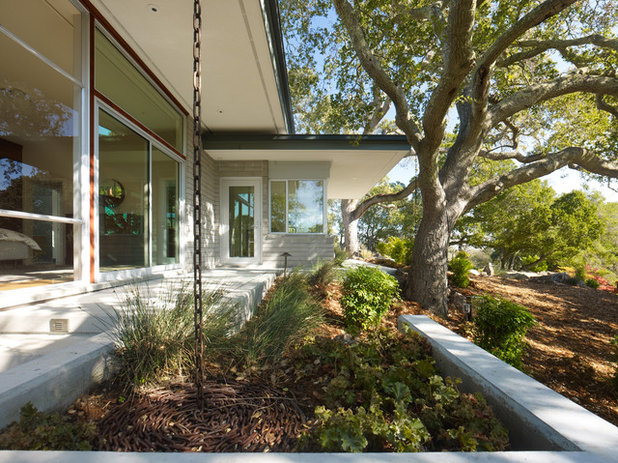
Cody Anderson Wasney Architects, Inc.
Identify how stormwater is moving in your yard. The first step in spreading your stormwater is to locate the specific flows of water coming off your roof, driveway or patio. Where is this water traveling to and from? If you watch your landscape during a heavy rainstorm, you will find spots where water gushes onto the ground. Roof downspouts and pipe outlets are likely culprits. The idea is to spread out the water from these concentrated runoff sources so that it can more readily soak into the ground.
Slowing and spreading stormwater are closely related, but are still considered discrete steps in a linked series of sustainable water management tactics. Runoff spreads more easily across the ground when it is moving slowly, and often the process of slowing water down involves methods that also spread water.
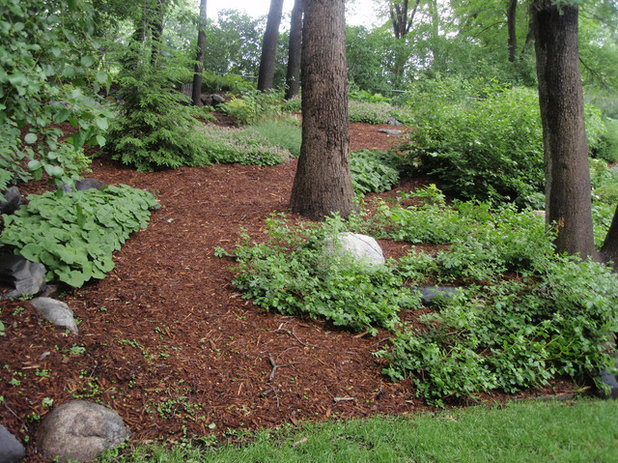
Field Outdoor Spaces
Cover bare ground. Bare ground, especially if it’s been eroded or compacted by water, can act like an impervious surface, shedding water runoff very quickly. To slow and spread water and prevent erosion, cover bare ground, such as a dirt path, with wood chips, stones, coarse-grade mulch or ground covers appropriate for your location.
Place stones or a woody ground cover on spots where downspout water plummets from the roof to help break up the rushing water on the surface. While you are making changes to your downspout, consider installing a rain barrel and having the barrel overflow into a swale or rain garden.
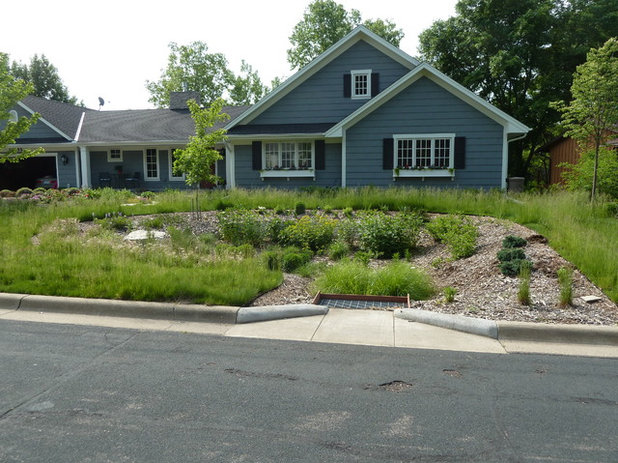
EnergyScapes
Add a rain garden. Rain gardens accomplish the sustainable water design trifecta of
slowing, spreading and sinking stormwater. A variety of plants, stones, crushed rocks and the appropriate type of mulch typically cover rain gardens and, in addition to the rain garden’s typical oblong shape, help to spread water across the surface of the ground.
You may have noticed lawns with sunken grassy, wildflower-filled garden beds in the center in yards, demonstration projects and neighborhood parks. Rain gardens require a large, continuous footprint and are best suited to medium to large landscapes.
How to Site and Size a Rain Garden for Your Landscape
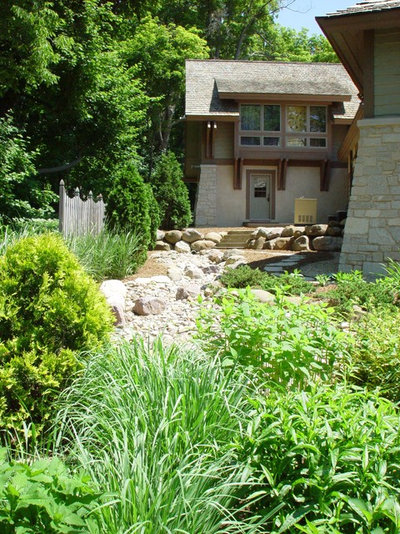
ZDA Inc.
Move water with a swale. Swales enhance water quality because, like rain gardens, they have the capacity to simultaneously slow, spread and sink water. They also provide more visual interest than a buried pipe and can anchor a landscape design with a beautiful water-inspired expression.
Swales can be designed in many different styles; some only move water, while others move and infiltrate water. Your soil type will affect which type of swale you can use, as clay soils provide poor infiltration while sandy soils can work great for it. Swales can be planted with grasses and perennials or with trees and shrubs. Their base materials can be lined with rocks or covered with wood chips. The most attractive swales blend with the existing conditions and take a cue from what’s naturally occurring in the landscape. This is accomplished by using native plants and local stones, and designing the swale as an integrated component of the landscape.
Swales can be used in many settings and are a great feature for yards that don’t have enough room for a rain garden.
Learn more about moving water with swales
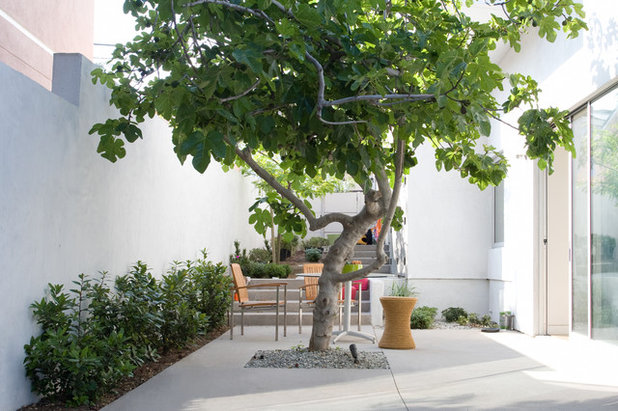
Birte Reimer
Plant wide-canopy trees. Trees, especially those with wide canopies, reduce runoff by intercepting rainwater before it hits paved surfaces and absorbing it through their leaves. This fig tree (
Ficus carica), though small, is a nice insertion into this little courtyard, because it intercepts rainwater before it hits the impervious concrete paving. Trees with wide canopies include acacias (
Acacia spp.), oaks (
Quercus spp.) and lindens (
Tilia spp.).
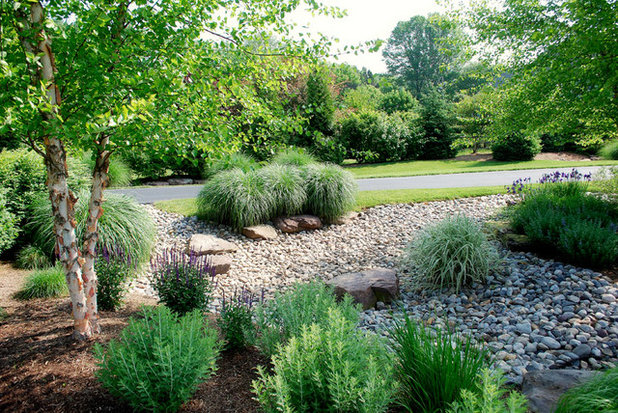
Sisson Landscapes
Use infiltration basins and trenches. Infiltration areas allow water to collect and slowly seep into the ground. Infiltration basins and trenches help spread water over an area of a yard and are a key part of the next step in the sustainable design mantra: “sink it.”
Infiltration areas can be basins, like the one pictured here, or they can be long, narrow trenches filled with stones. An infiltration trench works well in a narrow space where it can capture runoff along the edge of a lawn or driveway. Your garden’s constraints will affect the infiltration type you use.
Up next: How to sink stormwater with plants, permeable materials and amended soils





